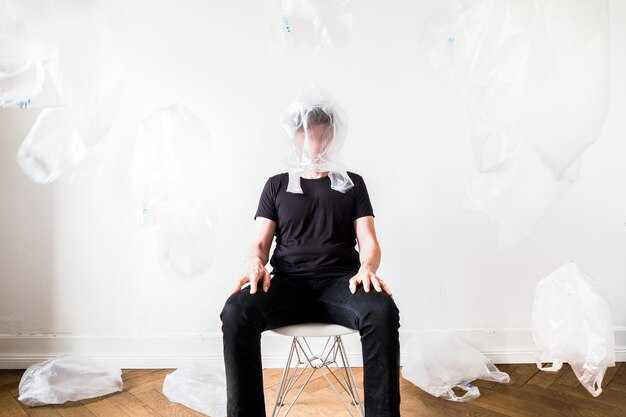Many people who have survived traumatic experiences end up surrounded by excess stuff, and because clutter can hold you back, it’s empowering when you find the inner strength to let go of items you’ve been clinging to that serve no purpose, that you can’t use, and that only create stress and obligation. But what about the cards, letters, photos and drawings that testify to small kindnesses or moments of love despite the mistreatment you endured? Those objects complicate things. Is it worthwhile to keep tangible reminders of what happened? My letter today comes from a woman I’ll call Esme. She writes: Hi Anna — I’m 41 and have always struggled massively with clutter. It’s limited me in so many ways, likely more than I recognize. It prevents me from having social relationships because I feel unable to invite anyone over, and it leaves me ashamed of myself. As I read, I’m circling things I want to revisit on a second pass, but first I want to hear your thoughts about how clutter is a huge issue for trauma survivors. I only managed to start decluttering successfully after discovering wild camping — it taught me how little I actually need or want. Also, a YouTuber known as the Minimal Mom acknowledged my panic around decluttering in a way no therapist ever did, and she helped me grasp how severe the clutter’s impact was. The Minimal Mom is wonderful; we did a video once — you should look her up on YouTube if you’re dealing with clutter. Her calm, healthy energy has been healing for me. YouTubers have given me the decluttering rules I’d been craving. Don’t you love how much you can learn on YouTube? Over the past decade I’ve learned so much there. Still, I lack criteria for items tied to C-PTSD, such as an old diary I found which proved I actually had friends at school — contrary to what I’d been told and what I remembered — and that we passed little notes in class. Yet when I open it I see how it was styled the way I was expected to present myself, the way a “good girl” was supposed to decorate. I recognize that look: the tiny, cutesy embellishments, and how I never felt seen or appreciated for who I was becoming by my golden-child sister and my parents. I also found birthday cards from when I was 12 that my parents sent after I invited them to a therapy session. During that session my father blamed me for my mother having strangled me at age five. He wrote that the therapy “didn’t help” them, asked if I intended to stay stuck in the past and ruin my life, and demanded an answer from me. I haven’t been in contact with them for three years because I simply can’t. It’s unbearably painful, yet sometimes my C-PTSD makes me feel tempted to reach out because of guilt and the longing for parents and the unrealistic hope that if I explain things differently this time they might change. I’m familiar with this: they leave messages on my voicemail every birthday saying almost the right things and then trying to guilt-trip me, and it sort of works. Those cards, though, help me see the unchanging pattern and therefore stop me from contacting them and sinking into another deep depression. These objects carry a lot of negative charge that I’d like to discard, but they’re also useful reminders of positive things, like the diary. How would you approach this? Have you dealt with similar dilemmas? I’m looking for rules that won’t make me regret getting rid of items that hold good memories, without having to write a whole book or create new digital clutter that still feels heavy. I hear you, Esme. Many people will likely relate strongly because our memories often shift toward either overly rosy or overly bleak recollections, and much of what we experienced was complex and mixed. It’s notable that for someone who endured trauma as a child — which clearly you did — organizing thoughts and feelings can be especially difficult; they can get stuck, and clear, orderly thinking becomes a real challenge. We need methods to process that jumble, and I suspect physical clutter often mirrors the mental chaos. Keeping things orderly requires thinking sequentially: picturing how a room should look, planning storage, deciding what to trash, donate, keep, or repair. When we feel stable, that idea is appealing and seems simple, but trying to do it can trigger dysregulation. As you clear out, you’ll run into items that evoke warm memories and others that make you cringe; that pattern, where some things never change, is useful information. When you mentioned decorating the diary like a “nice girl,” that’s a common experience — conforming to expectations was a normal part of growing up in many groups. I remember in high school a girl who used to be bright suddenly joined the popular crowd and sat through a humanities class painting her nails instead of engaging with Homer’s Odyssey; it felt like a betrayal. The way children ostracize others can itself be traumatic. Still, there’s also the reality that conformity among teenage girls is typical — they often dress alike and follow a leader — and while that can be painful, it’s a normal developmental behavior. What’s far more disturbing is what you briefly revealed about inviting your parents to therapy and your father blaming you for your mother strangling you at age five. The brevity of your account hints at how monstrous the story must be, and it’s almost a relief not to relive every detail publicly. The notion of harming a five-year-old is abhorrent, and then to be blamed by the other parent is an additional cruelties. I’ve encountered similar family dynamics, so I know how when you’re young you want to make them see the truth, believing perhaps that if you explain it better they’ll finally understand. That hopeful belief — “if I just explain it once more” — is something many of us hold on to. Reaching a point where you realize they likely won’t change is a crucial phase in healing: a kind of sober hopelessness that protects you. People who can’t face their harmful actions often deflect by saying the problem is that you’re fixated on the past, not admitting the wrongdoing itself. If those people were strangers you could dismiss them as jerks, but because they’re parents they push deep buttons they installed in you, and it’s hard not to be affected emotionally even when you intellectually know better. You’re now weighing these objects as either carriers of bad energy that trap you in the past or as liberating reminders that help you avoid re-engaging with harmful people. That’s a valid way to view them, but it risks a black-and-white trap: thinking you must either toss everything and never be affected again, or keep it all and remain wounded. In reality, whether you discard or preserve items, you’ll probably oscillate between being reminded and minimizing; that’s human. If you’re unsure, don’t rush to throw things out — you can set them aside. Also, you can reclaim power over these objects by changing how you relate to them: the harmful energy isn’t in the items themselves but in the trauma response they trigger inside you. Over time you can learn to remember the facts without the automatic, overwhelming charge. Healing means being able to recall events — to tell the facts and feel sadness, perhaps — without having the memory slam your nervous system every time it surfaces. PTSD reflects a failure to process memories so they stop hijacking your body and mind. When that processing hasn’t happened, it can feel like the objects are the problem, but the real issue is the traumatized response within. You can change that, and doing so gives you more options for what to do with keepsakes from the past. One practical path for this work is a daily practice offered in our community for people with difficult childhoods. If you haven’t tried it yet, it’s worth considering: the course is free and it teaches naming and working through fearful and resentful thoughts and emotions — roughly the anxious and the angry buckets into which most negative feelings fall. The approach involves writing them down and following a specific format to get them out and lessen their hold. Reducing fear and resentment isn’t about denying reality; it’s about returning to the facts with less charge. Anxiety and anger create the intensity, and while those emotions are often appropriate, we can become stuck in loops. This method helps unpack the loops so you can think more clearly about whether to keep or release objects. You don’t have to do anything with your belongings right away, but having choices feels liberating. If you haven’t tried the daily practice and you’re ready to give it a shot, it takes under an hour and is free. It shows you precisely how to do the work — I recommend learning it. You can access the free course by clicking right there, and I’ll see you very soon. [Music]
Practical guidelines to help you decide what to keep, what to alter, and what to let go of—trauma-aware and concrete:
- Use a “safe session” rule: Work in short, scheduled sessions (15–45 minutes) when you feel relatively calm. Have grounding tools ready (breathing, a weighted blanket, a list of emergency contacts). End the session before you feel overwhelmed.
- Adopt the “three-category” test: For each item ask: (1) Is this needed as evidence or for legal/medical reasons? (2) Does this item actively help protect my boundaries (reminds me of a pattern that keeps me safe)? (3) Does this item bring steady comfort and joy that I can feel without being retraumatized? If none of these apply, it’s probably safe to let it go.
- Try the box-with-a-date method: Put uncertain items in a sealed box, label it, date it, and store it out of daily sight. If you haven’t missed or needed anything in the box after a set period (3–12 months), consider discarding or donating without opening it again.
- Limit keepsakes to representatives: Instead of keeping every card, choose one or two representative items that capture the memory without filling a room. This reduces the burden while preserving meaning.
- Change the relationship, don’t just change the location: Reframe objects with a short note on the back (date, why you kept it, what you learned). Writing a “truth label” can turn an item from an emotional trigger into a factual artifact you control.
- Digitize selectively and safely: Scan or photograph a few items to preserve the information, then decide whether the physical copy is needed. Keep digital files minimal, organized, and stored where you can control access (encrypted folder, password-protected). If digital copies cause distress, they aren’t required—your emotional safety comes first.
- Preserve evidence, protect privacy: If any item contains information that could be used in legal or therapeutic settings (abuse reports, threatening messages), keep originals in a secure place or follow advice from a lawyer/therapist before disposing.
- Use a ritual for letting go: Do a small ritual that acknowledges the loss and your agency—say a short statement, bury or burn papers safely if that feels right (follow local safety rules), or tear and recycle if burning isn’t possible. Rituals help mind and body register the choice as intentional.
- Don’t declutter alone if it’s high-stakes: Invite a trusted friend, therapist, or trauma-informed decluttering coach to be present (in person or virtually) for support, validation, and practical help.
- Make a “keep for boundaries” pile: If some cards help you remember a pattern that protects you from re-engaging unhealthy people (like your parents’ manipulative birthday messages), consider keeping one file that’s easy to access when you need a reality check, then limit how often you look at it.
How to handle the emotional process as you sort:
- Ground before and after: Use a 5-4-3-2-1 grounding exercise, paced breathing, or a brief walk to steady your nervous system.
- Name the feeling out loud: Pause and say, “I feel _____ right now.” Naming reduces intensity and helps you make a clearer decision about the object.
- Use short written “contracts” with yourself: If you keep an item because you’re afraid of regret, write a note that you can revisit: “I am keeping this until [date]. If I still want it then, I will re-evaluate.”
- Begentle about “guilt”: Guilt can be a learned response from people who harm you. Ask: Whose rules am I following if I keep this? Am I honoring myself or someone else’s expectations?
- Expect ambivalence: It’s normal to oscillate. If a decision feels wrong later, you can change it. Decluttering is not a single test—it’s an ongoing practice tied to healing.
When to ask for professional help:
- If handling certain items repeatedly triggers severe flashbacks, dissociation, or panic attacks, pause and consult a trauma-informed therapist before proceeding.
- If materials could be relevant to safety planning, legal proceedings, or therapy work, get guidance about preservation and storage.
- Consider trauma-focused therapies (EMDR, CPT, TF-CBT) with a qualified clinician to process memories so objects lose their power to hijack your nervous system.
Final practical tips:
- Set small, measurable goals (one drawer, one box, one shelf) and celebrate completion.
- Use clear storage solutions and label them so you don’t have to search through emotional minefields later.
- Keep a short “why I kept this” note with important items so meaning stays intentional rather than automatic.
- Remember: decluttering is part practical and part psychological. The aim isn’t perfection; it’s gaining control and choice.
If you’d like, I can help you build a short step-by-step plan tailored to a single box or shelf you want to tackle safely. You don’t have to do it all at once—small, consistent steps are how we change what feels unmanageable into something manageable.















